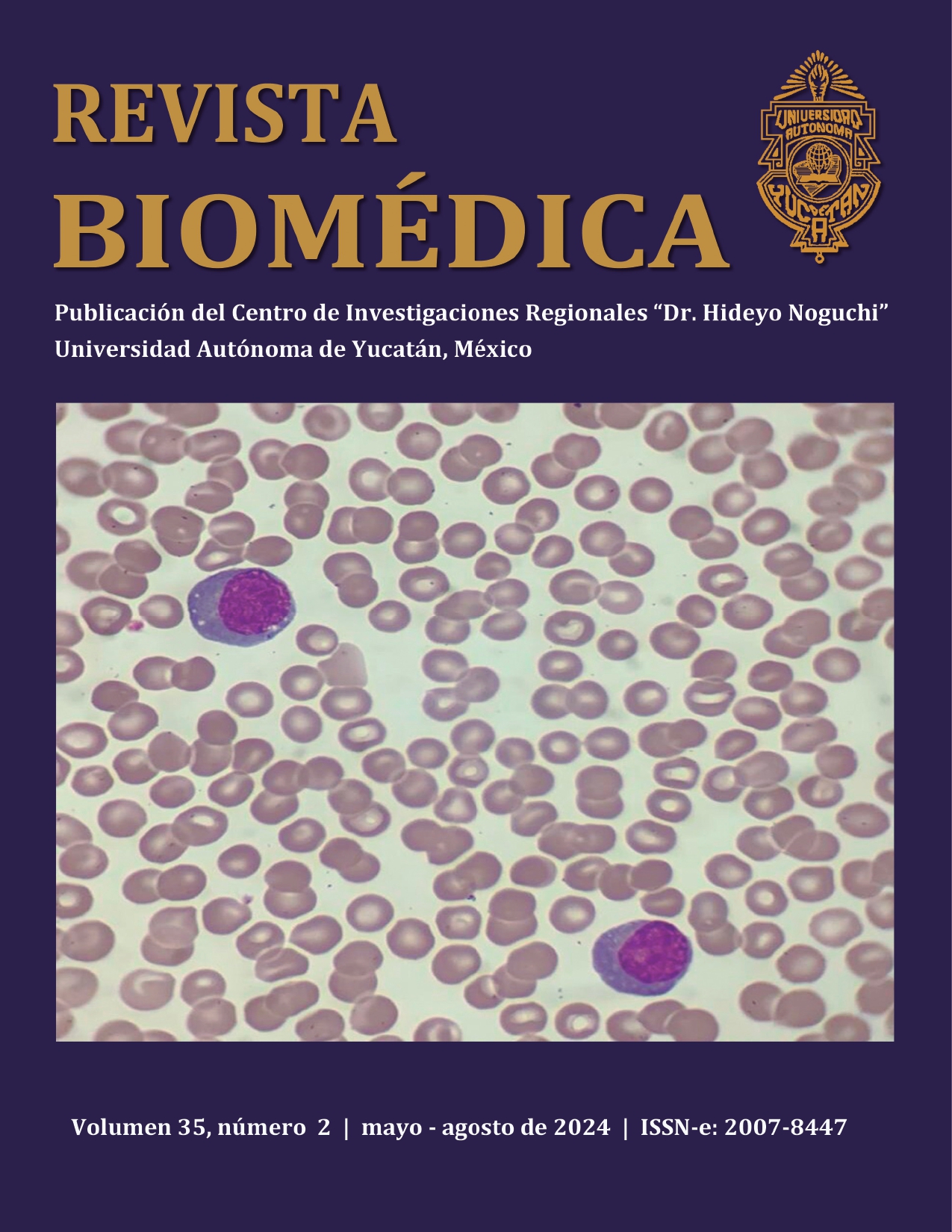Topical treatment of cutaneous leishmaniasis using a nanoemulsion cream-based on generic pentavalent antimony. Case report.
Resumen
Introduction. An effective vaccine against cutaneous leishmaniasis has yet to be developed. Treatment of the disease relies on painful intramuscular administration of high doses of compounds based on pentavalent antimony, causing adverse effects. New therapeutic options effective, easy to apply, cheap and without adverse effects are urgently required.
Case report. A 26-year-old male patient showing a large facial ulcer, presumptively by cutaneous leishmaniasis, diagnostic confirmed by Montenegro’s skin test and microscopical observation of amastigote forms. Due to the ulcer’s location and size, topical treatment with a nanoemulsion cream-based on a generic antimony-compound was attempted. The cream was applied twice daily and was rapidly absorbed. After 2 months of treatment, no discomfort or other adverse effects were detected. The ulcer was replaced with healthy skin tissue and a soft, clean scar.
Conclusion. The novel cream, which was rapidly absorbed, effective, cheaper than standard systemic therapy and self-applied by the patient, showed potential value in the treatment of cutaneous leishmaniasis.
Keywords: Cutaneous leishmaniasis; Antimony nanoemulsion-cream; Topical treatment
Tratamiento tópico de leishmaniasis cutánea con crema-nanoemulsión de un compuesto genérico antimonial pentavalente. Caso clínico.
RESUMEN
Introducción. Vacunas contra leishmaniasis cutánea, aún no han sido desarrolladas. El tratamiento de la enfermedad mediante administración intramuscular de altas dosis diarias de un compuesto antimonial pentavalente, causa dolor y otros efectos adversos. Nuevas opciones terapéuticas efectivas, de fácil aplicación, económicas y sin efectos adversos son requeridas urgentemente.
Caso Clínico. Paciente masculino de 26 años presentando úlcera facial, por presuntiva leishmaniasis cutánea, diagnóstico confirmado por intradermo-reacción de Montenegro y observación microscópica de formas amastigotes. Debido al tamaño y localización de la úlcera, fue utilizado tratamiento tópico con crema-nanoemulsión basada en compuesto antimonial. La nano-emulsión aplicada dos veces a diario fue rápidamente absorbida y, a dos meses de tratamiento, el paciente no manifestó efecto adverso alguno. La úlcera fue reemplazada con piel sana y, una suave y limpia cicatriz.
Conclusión. La crema-nanoemulsión rapidamente absorbida, efectiva, más económica que la terapia sistémica y de aplicación directa por el paciente, mostró valor potencial en el tratamiento de leishmaniasis cutánea.
Palabras claves: Leishmaniasis cutánea; Crema-nanoemulsion; Tratamiento tópico
Referencias
Añez N, Nieves E, Cazorla D, Oviedo M, de Yarbuh AL, Valera M. Epidemiology of cutaneous leishmaniasis in Mérida, Venezuela. III. Altitudinal distribution, age structure, natural infection and feeding behavior of sandflies and their relation to the risk of transmission. Ann Trop Med Parasitol. 1994; 88:279–287. https://doi.org/10.1080/00034983.1994.11812868
Chaves LF, Añez N. Species co-occurrence and feeding behavior in sand fly transmission of American cutaneous leishmaniasis in western Venezuela. Acta Trop. 2004; 92:219–224. https://doi.org/10.1016/j.actatropica.2004.08.001.
Torrellas A, Ferrer E, Cruz I, de Lima H, Delgado O, Carrero J, et al. Molecular typing reveals the co-existence of two transmission cycles of American cutaneous leishmaniasis in the Andean Region of Venezuela with Lutzomyia migonei as the vector. Mem Inst Oswaldo Cruz. 2018;113(12):e180323. https://doi.org/10.1590/0074-02760180323.
Scorza-Dagert JV, Morales C, Petit de Peña Y, Vásquez E, Rojas E, Scorza JV. Síntesis de un complejo antimonial pentavalente (Ulamina) y su aplicación experimental para el tratamiento de leishmaniasis cutánea localizada en Venezuela. Bol Malariol Sal Amb. 2006; 46(1):59-65.
Almeida R, Brito J, Machado P, de Jesus A, Schriefer A, Guimarães LH et al. Successful treatment of refractory cutaneous leishmaniasis with GM-CSF and antimonials. Am J Trop Med Hyg. 2005;73(1):7981. https://doi.org/10.4269/ajtmh.2005.73.79 .
Vásquez LC, Scorza-Dagert JV, Scorza JV, Vicuña-Fernández N, Petit de Peña Y, López P, et al. Pharmacokinetics of experimental pentavalent antimony after an intramuscular administration in adult volunteers. Cur Ther Res Clin Exp. 2006; 67: 193-203. https://doi.org/10.1016/j.curtheres.2006.06.005.
Lindoso JAL, Costa JML, Queiroz IM, Goto H. Review of the current treatments for leishmaniasis. Res Rep Trop Med. 2012; 3:69–77. https://doi.org/10.2147/RRTM.S24764 .
Duque MC, Vasconcellos EC, Pimentel MI, Lyra MR, Pacheco SJ, et al. Standardization of intralesional meglumine antimoniate treatment for cutaneous leishmaniasis. Rev Soc Bras Med Trop. 2016;49(6):774–776. https://doi.org/10.1590/0037-8682-0213-2016.
Añez N, Rojas A, Scorza-Dagert JV, Morales C. Successful treatment against American cutaneous leishmaniasis by intralesional infiltration of a generic antimonial compound-lidocaine combination. A follow up study. Acta Trop. 2018; 185: 261–266. https://doi.org/10.1016/j.actatropica.2018.06.001.
Bullón J, Márquez L, Fernández JA, Scorza C, Scorza-Dagert JV, Rodríguez J, et al. A Promising Cutaneous Leishmaniasis Treatment with a Nanoemulsion-Based Cream with a Generic Pentavalent Antimony (Ulamina) as the Active Ingredient. Cosmetics. 2021; 8(115): 2-17. https://doi.org/10.3390/ cosmetics8040115.
WHO Expert Committee on the Control of the Leishmaniases & World Health Organization. Control of the leishmaniases: Report of a Meeting of the WHO Expert Committee on the Control of Leishmaniases, Geneva, Switzerland, 22–26 March 2010; World Health Organization: Geneva, Switzerland.
Roberts M, Cross S, Pellett M. Skin Transport. In: Dermatological and Transdermal Formulations, 1st ed.; Walters, K.A., Ed.; CRC Press, Taylor & Francis: New York, NY, USA 2002.
Magnusson BM, Anissimov Y, Cross S, Roberts M. Molecular Size as the Main Determinant of Solute Maximum Flux Across the Skin. J Investig Dermatol. 2004; 122:993–999, https://doi.org/10.1111/j.0022-202x.2004.22413.x.
Rodrigues LN, Zanluchi JM, Grebogi IH. Percutaneous absorption enhancers: Mechanisms and potential. Bras Arch Biol Technol. 2007; 50:949–961, https://doi.org/10.1590/s1516-89132007000700006.
Leite-Silva VR, de Almeida MM, Fradin A, Grice J, Roberts M. Delivery of drugs applied topically to the skin. Expert Rev Dermatol. 2012; 7:383–397, https://doi.org/10.1586/edm.12.32.
Enlaces refback
- No hay ningún enlace refback.













